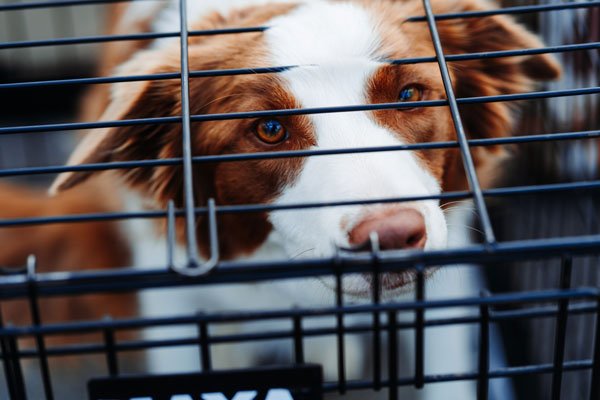
If you’re traveling for the holidays, chances are you’re going to have to leave your precious pup behind. Although you can take them along, this doesn’t provide the convenience of boarding kennels. Making the decision to board your pet for the first time can be overwhelming — but it doesn’t have to be. Luckily for you, we’ve outlined everything you need to know about dog boarding requirements.
Dog Boarding Types
Before getting into the dog boarding requirements, let’s talk about the types of boarding facilities.
Modern Boarding Homes. Think of modern boarding homes as a doggy day camp. Unlike more traditional boarding kennels, these come with an array of amenities. Some of them include an area designation for playtime and socialization, grooming, and 24/7 live stream updates for owners.
The primary bonus to modern boarding homes is that they offer a more homey vibe than traditional kennels. However, these types of facilities are usually more expensive depending on the amenities. Also, the staff at these boarding homes often aren’t able to give special medical assistance like animal clinic kennels.
Animal Clinic Boarding Shelters. These types of kennels are offered by veterinarian facilities and are most ideal for dogs with special medical needs. Unlike more modern kennels, these are old-fashioned and sterile — no live streams, text updates, or doggy spas. Also, animal clinic boarding facilities are more cost-effective than other kennels.

Dog Boarding Requirements
Before you drop your furry pal off at the kennel, there are a few things to take care of. Here’s what you need to do to be prepared for your dog’s boarding stay:
1. Do a Temperament Assessment
Not all dogs thrive in a new environment, some can even become irritable and turn violent. To ensure the safety of yourself and the dog handlers, ask the boarding facility for a temperament assessment.
A temperament assessment is a trial run to see if your dog meshes well with the staff and other dogs. Most importantly, it lets you know if the kennel is the right fit.
2. Consider Your Dog’s Needs and Safety
In addition to a temperament assessment, there are other factors to take into consideration:
Sanitation. Proper sanitation prevents disease outbreaks and keeps pets healthy. Find out how often the facility is sanitized. Find out if the air is purified for kennel cough or other airborne illnesses.
Staffing. Consider if there will be staff around 24/7. You want to ensure that your dog gets around the clock care. If your dog has medical needs, is the staff able to administer assistance?
Reviews. When researching boarding facilities, look at their reviews. Is the general consensus positive?
Check-ins. If it’s your first time boarding your dog, chances are you will want up to the minute updates. So, consider if the boarding option can supply you with constant updates.

3. Schedule in Advance
If leaving your furry friend at a boarding facility, it’s best to schedule their stay ahead of time — usually two to three weeks in advance.
Traveling for the holidays? Make the reservation 2 months ahead of time.
4. Update Medical Records and Vaccinations
After you’ve scheduled your dog’s boarding stay, your next step should be updating their medical records. State laws and kennel requirements will vary, but it’s best to make sure your pooch is on schedule for the necessary vaccinations.
It’s recommended that vaccinations are administered 10 to 14 days before dropping them off at a kennel — this is, so the vaccine has ample time to take effect. However, if you’re a little pressed for time, it’s acceptable to have them given at least 48 hours before their stay.
Vaccinations required for dogs:
- DPP (Distemper, Parvovirus & Parainfluenza
- Bordetella
- Canine Influenza
- Rabies
- Leptospirosis
- Fleas & Ticks
5. Bring Identification
Identification is probably the most critical dog boarding requirement. Ensure that the information on your dog’s collar and microchip are updated and accurate. You also want to leave your name, your dog’s name, phone number, and address. It doesn’t hurt to add emergency contacts, too — which brings us to the next crucial dog boarding requirement.

6. Provide More Than Enough Information
In this case, there’s no such thing as giving too much information — the more you provide, the better.
One of the things you should leave with the boarding place is your dog’s updated medical records. Like previously mentioned, the kennel must have proof that your dog is vaccinated.
For an added level of assurance, you may want to provide emergency contact information just in case you can’t be reached.
An emergency contact could be a trusted family member, friend, or your dog’s veterinarian. You can even list a few emergency animal clinics as well — in the event your vet is unable to help.
7. Pack the Essentials
You want your dog to make a smooth transition from their home environment to completely new surroundings. To do this, you may want to pack things that help ease their stress. Check out this list of things to send with your dog to make them feel at home:
Something From Home. Pack something that reminds them of you— hint: something with your scent on it. This is typically a blanket, t-shirt, and or toy. These items are not only emotionally soothing but physically comforting too!
Extra Food and Snacks. Another thing you may want to pack is food. Some kennels offer their own food, but the change in diet may intensify your dog’s stress or cause digestive issues. So, it’s a wise idea to pack their usual food. Be sure to pack extra just in case their boarding stay needs to be extended.
Medication. Don’t forget to pack your dog’s medicines along with dosage sizes and instructions.

Dog Boarding Requirements Overview
No one wants to leave their furry little companion behind, by following these dog boarding requirements, you can rest assured that your dog is safe, healthy, and cared for.
If you’re managing a kenneling facility and looking to optimize your businesses take a look at our free trial and see how Daysmart Pet Software can help you business succeed.
Want to know more about how you can better take care of your dog? Follow our blog.
,
